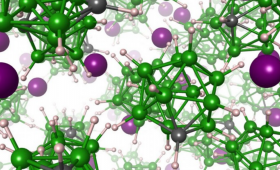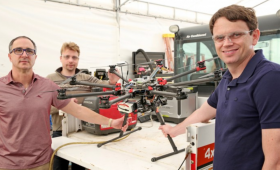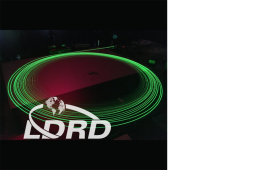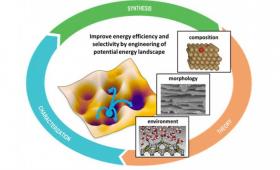Lawrence Livermore scientists have received funding improve the energy efficiency of copper-based catalysts to convert carbon dioxide into methane and other valuable hydrocarbon products.
Science and Technology Highlights

This video describes the work of Lawrence Livermore National Laboratory's National Ignition Facility.

Livermore scientists observe the first experimental evidence of a noble gas element reacting with a metal.

An international collaboration jointly led by Lawrence Livermore National Laboratory is studying materials for solid-state lithium-ion batteries.

A team of Livermore researchers is developing networks capable of "collaborative autonomy"

Lawrence Livermore researchers are developing lasers that are both high-powered and “eye-safer” to reduce the danger of retinal damage to bystanders from exposure to scattered laser light.

Bigfoot is an experimental platform designed to control implosion symmetry and hydrodynamic instabilities, improve predictability, and enhance the delivery of laser energy to NIF’s targets.

Scientists use accelerator mass spectrometry (AMS) to find out how old a sample is. (Video)

New research by Lawrence Livermore and partners shows that drone-based delivery could reduce greenhouse gas emissions and energy use in the transportation sector.

Livermore scientists and colleagues found that sclerostin acts as a protective molecule immediately after joint injury to inhibit cartilage loss and joint calcification.

